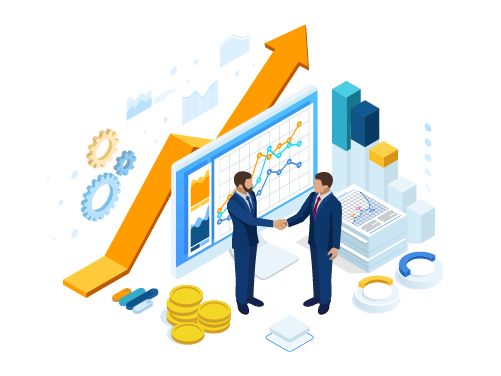The Analytic Divide: Creating Winners and Losers for Individuals, Companies and Countries
Talk of a “digital divide” has been with us since the birth of the Internet. In 2021, there’s a new divide. Alteryx’s Alan Jacobson shows IDN how the ‘analytics divide’ will determine winners and losers – among individuals, companies and even countries.
by Alan Jacobson, Chief Data & Analytics Officer of Alteryx
Tags: AI/ML, analytics, Alteryx, data, digital, machine learning, transformation,

Chief Data & Analytics Officer

"Companies that are more analytically mature perform significantly better than their peers."
Summit
In the 1980s, the concept of the “digital divide” was interpreted solely as the gap between those with and without telephone access. By the 1990s, the concept was more widely understood as the gap between those with access to modern technology, like internet or broadband – the “haves” and “have nots.”
This divide has been viewed by most to be a cause and an effect of poverty, and while progress has been made on this front, much work remains.
However, today, there is a new divide: An analytic divide that is separating individuals, companies and perhaps countries. This analytic divide is between those who have analytic skills and are able to automate processes and apply analytics to leverage the information that is available, and those who do not have those skills.
This divide has been measured in businesses by groups such as the International Analytics Association, which assessed thousands of companies and found correlation between those that are “analytically mature” and their operating performance (i.e., revenue, margin, etc.). As you would expect, those companies that are more analytically mature perform significantly better than their peers.
From Finance to HR to Engineering, financial institutions to manufacturing companies are all looking to leverage analytics. We see this at an individual level as well with the digitally-enabled accountant who can command a higher salary than their non-digital counterpart, or the analytically-savvy marketing professional who can find more opportunities and higher wages than their non-analytic peers.
I am passionate about making analytics more accessible and helping individuals and companies take this upskilling journey as it leads to better outcomes. People are able to create higher earning careers and companies are able to improve their delivery and make more money.
As globalization brings more competition in every industry, it’s these types of competitive advantages that will set companies and countries apart in the future. We see companies driving upskilling across their workforce, helping their employees become more capable of automating processes and leveraging AI and ML in their work.

What Does the ‘Upskilling Journey’ for Analytics Look Like?
While every journey is different, there are common patterns in how this transformation occurs.
Employees frequently start by learning a new tool/technology like Alteryx. They then apply the technology to what they were already doing. Can they wrangle data faster and easier? Can they analyze it and find patterns more readily? Once they are comfortable on this step, they move towards automating existing processes. At this first step of the transformation the savings are modest, measured in time savings that can be put into higher value work.
The next step is typically adding analytics to the process, with forecasting, anomaly detection or more basic analysis to allow optimization of a business outcome. \In this step, processes begin to be re-engineered and changed. Let’s look at an example that we all can picture during this current COVID-19 situation: the shipping of goods.
A major manufacturer has thousands of products that they ship. Each product has hundreds of parts that have to be managed to ensure no disruption in the production cadence. The standard shipping times for all parts have been entered into their fulfillment system, and based both on how fast the plant is consuming parts and, on the sales forecast, orders are made to ensure the supply parts show up before running out. Everything is working smoothly until suddenly the supply chain is disrupted and shipping times start to change dramatically.
How does the manufacturer re-enter all the new shipping times into the system to ensure the re-ordering is happening at the right time? Certainly, a team of people could manually go work on this, and depending on the number of parts, eventually they would have the system updated. A day later, though, the shipping times could begin to change again, and this would cause a never-ending cycle to update the system. Alternately, a simple analytic model could be built that monitors the shipping times in real-time and automatically updates the system with the most current estimates.
Final Thoughts on Bridging the Analytic Divide
Our world today contains too many systemic barriers to opportunity for too many people. Analytics can be a great equalizer, a way to provide more opportunities to individuals. Companies can help their employees on this path through upskilling, schools can help better prepare our students for these opportunities, and as individuals, we can seek these skills to help us remain relevant and capable for the new jobs that are rapidly approaching.
How are you approaching this journey, and are you helping to enable others to journey forward as well?
Alan Jacobson is the Chief Data & Analytics Officer of Alteryx. He is passionate about eliminating the ‘analytics divide’ throughout industries. The Alteryx ADAPT program offers free upskilling to those impacted by the current pandemic and can help any company accelerate on their digital transformation journey. Follow Alan on LinkedIn.
Related:
- Tray Enterprise-Class AI Platform Casts Light on “Shadow MCP” and Controls “AI Sprawl”
- Xano 2.0 Updates Production Grade Backend for AI, Apps To Solve "Vibe Coding Trap"
- Ai4 2025 Vegas Wrap-Up: What Enterprises Need to Know About Emerging AI Solutions
- Boomi Agentstudio Looks To Deliver Full-Featured Management Platform for AI Agents
- Agentic AI: Unlocking Business Value with the Next Evolution in Enterprise Intelligence
All rights reserved © 2025 Enterprise Integration News, Inc.



